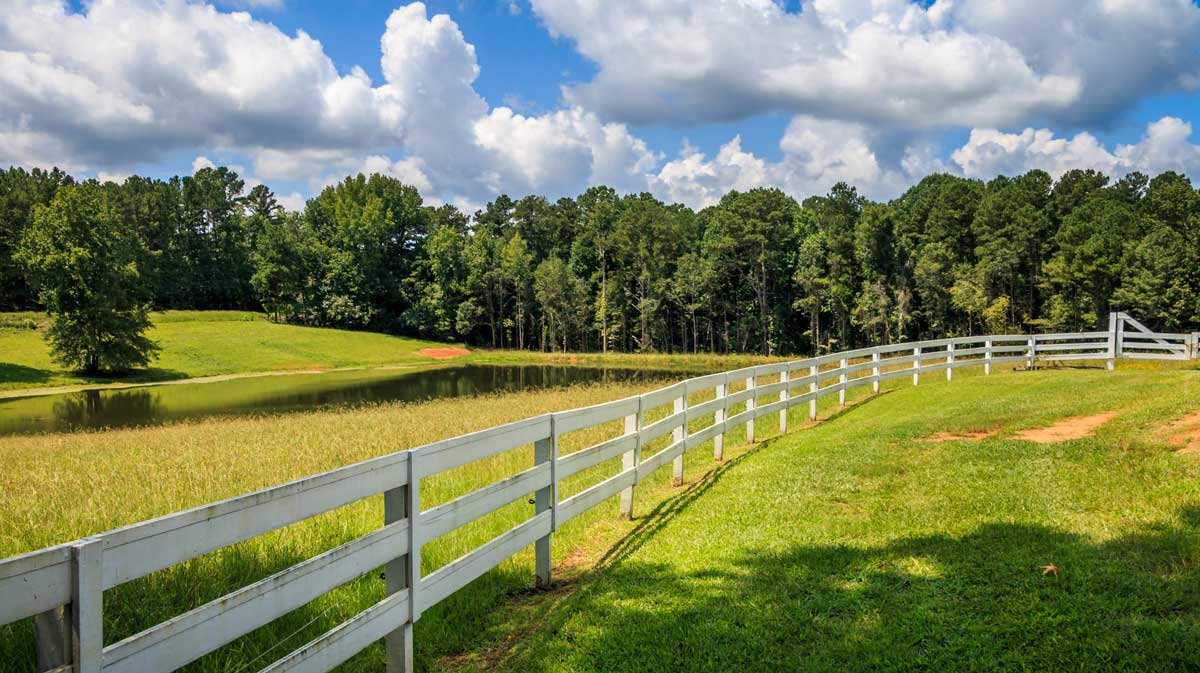
The Court of Appeals of Virginia Addresses Applications of Easements in Two Recent Cases
There have been two recent cases from the Court of Appeals of Virginia regarding the application of easements. For the uninitiated, an easement is a right to someone else’s property for a particular purpose. Common examples include power lines, sidewalks, and shared driveways. An easement creates two types of properties, a dominant estate granted rights to use the easement and the servient estate, the property which the easement burdens. There are a number of ways that easements can be created, and the Court of Appeals has recently addressed two of the more uncommon methods.
Easements by Necessity: Jackson v. Commonwealth of Virginia
Jackson v. Commonwealth of Virginia concerns easements by necessity. The circuit court granted the Commonwealth’s demurrer and Mr. Jackson appealed. Mr. Jackson purchased his property in 2001 and used a road that traversed another parcel to access his property. In 2006 the Commonwealth acquired the alleged servient estate and filed an ejection action against Mr. Jackson. The two parcels were once owned by a common owner, Walker, who sold the Commonwealth’s parcel to the Norfolk and Western Railway in 1912. Walker retained and continued to reside on the landlocked parcel now owned by Mr. Jackson. Mr. Jackson asserts that after selling the accessible parcel to the railway, Walker continued to use the road across the railway’s parcel to access his landlocked parcel, creating an implied reservation of an easement by necessity.
If a property owner sells part of their property and the portion that they retain becomes landlocked as a result of the sale, that owner can “reserve” a right of way across the sold parcel for access. To establish this type of implied easement by necessity, a claimant must show that at one point the two parcels had a common owner, that at the time of the severance there was a road or way of access to the dominant parcel across the servient parcel, and that the road or way of access continued to be in use. Jackson argues Walker created the easement by necessity in 1912 because Walker continued to live on the property and further alleges that the road in question existed when Walker sold the parcel to the railway.
However, Jackson was unable to offer any evidence to show the access road existed in 1912. He did provide as evidence of the existence of the easement in 1912 a survey created in 1934 showing the road accessing his property. The Commonwealth argued that the 1934 survey was not evidence that the easement was created in 1912. However, the Court of Appeals held that a reasonable fact finder could view the survey as evidence that the easement existed in 1912. Ultimately, the Court of Appeals ruled that this matter was a question of fact and should be properly decided at trial. Accordingly, the Court of Appeals remanded the case.
Prescriptive Easement: Boxley v. Crouse
In Boxley v. Crouse, the Court of Appeals addresses the issue of a prescriptive easement. The Crouses purchased a property in 1989 that was accessed by a road called Hawk Trail that passed through two parcels of land, one of which is now owned by Ms. Boxley. The prior owner of Ms. Boxley’s property, Corbett, had erected a gate blocking Hawk Trail in 1995 that was never locked. Corbett mailed the Crouses a key to the gate with no further explanation. Corbett died in 2013 and in 2014 Ms. Boxley became the owner of the property. In 2020 Ms. Boxley changed the lock on the gate and refused to give a key to the Crouses. The circuit court found in favor of the Crouses and ordered Ms. Boxley to remove the gate. Ms. Boxley appealed to the Court of Appeals.
A prescriptive easement requires that a claimant prove that the use of the property was adverse, under a claim of right, exclusive, continuous, uninterrupted, with the knowledge and acquiescence of the owner of the land, and has continued for at least 20 years. Ms. Boxley appealed on two main arguments, that the Crouses failed to prove that the use was continuous and uninterrupted and that they failed to prove their use was hostile because Corbett had given them a key.
The Court of Appeals dismissed Ms. Boxley’s assertion that the use was not continuous, reasoning that the use only had to be enough that it gave reasonable notice to the landowner that the right was being exercised against him. The evidence presented at trial showed that the Crouses used Hawk Trail for a period of at least 25 years, up until Ms. Boxley changed the lock.
The Court of Appeals likewise rejected Ms. Boxley’s argument that Corbett mailing the Crouses a key was him giving permission for the Crouses to use Hawk Trail. If Corbett had given them permission, they would not be able to claim a right to a prescriptive easement. The Court of Appeals found that the Crouses were able to show that their use of Hawk Trail was “open, visible, and continuous throughout the required prescriptive period,” which creates a presumption that their use arose adversely or under a claim of right. The burden then shifted to Ms. Boxley to show that the Crouses’ use of Hawk Trail was permissive. Ms. Boxley was not able to rebut the presumption.
Interestingly, the circuit court ordered the gate to be removed altogether. Ms. Boxley appealed this decision, requesting to keep the gate up and unlocked. The CAV affirmed the decision of the circuit court. Virginia Code § 33.2-110(A) provides that any person owning land over which another person has a right-of-way may erect a gate across the right-of-way if there are fences on either side of the gate. In this case, the gate was freestanding and CAV ruled that a servient landowner may not have a gate across a right-of-way if there are not fences on either side of the gate.
Special thanks to Jessie Cooke from the University of Richmond for her assistance in preparing this post.



Sorry, the comment form is closed at this time.